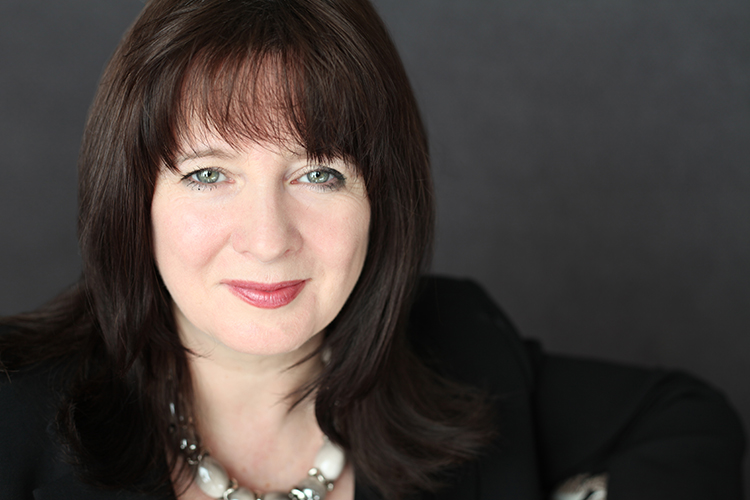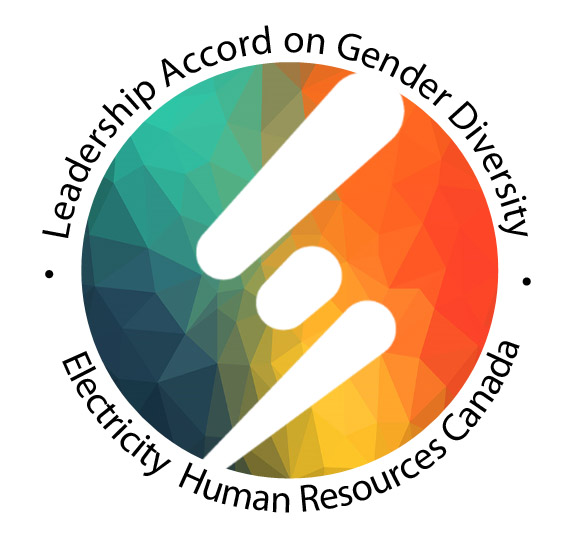Powerful Women: Michelle Branigan

Michelle Branigan is the CEO of Electricity Human Resources Canada (EHRC). In our previous post, we discussed EHRC’s leading work in promoting diversity, equality and inclusion within the industry.
Michelle is an experienced senior executive with extensive strategic board, communication, leadership, financial and project management experience both in Canada and Ireland. She is an active board member of the Energy Council of Canada and Irish Film Festival Ottawa. She was a recipient of Women in Renewable Energy’s (WiRE) 2015 Woman of the Year Award, which recognizes and celebrates professional women working in the energy sector who go above and beyond business as usual.
In her interview, Michelle encourages women to not worry about being perfect and avoid limiting themselves. She also highlights the opportunities ahead as the industry undergoes a major transformation.
1. How did you originally get involved in energy-related work?
I’d love to say it was a long-held dream, but in reality, it was totally accidental. I love travelling and, having lived and worked in Frankfurt, Toronto, Vancouver and Dublin (my hometown), we were given the opportunity to relocate to Ottawa. I was working as a consultant in the architectural field when I saw a position open in EHRC (then the Electricity Sector Council). It seemed to be the perfect fit for my past experience working with Irish organizations to develop their strategic human resource capabilities in order to succeed as exporters to international markets.
I started as the labour market project manager in 2007 and then eventually took over as CEO in 2010.
Here at EHRC, our focus is on building partnerships with industry, collaborating to develop the skills and competencies that are required within the industry, and ensure that the Canadian electricity industry has a ready and accessible workforce that is second to none. Having known nothing about electricity when I entered the sector - I can still barely change a plug - it has been a fascinating journey. Canada has one of the most diverse energy systems in the world, and is recognized as a world leader in the generation and use of renewable power. Those working in the sector are passionate about energy and it’s always inspiring to learn more about how the industry is evolving, and to be part of it.
I also sit on the Board of the Energy Council of Canada, which provides me with the opportunity to gain insight into the wider energy industry, and a number of working groups that focus on topics ranging from trades mobility to Indigenous engagement, skills development and everything in between. There is never a dull moment.
2. What do you see as the key challenges facing the energy sector today and going forward?
For me, the word “challenge” always brings to mind the word “opportunity.”
The energy industry is in the midst of a major transformation - many electrical assets are approaching the end of life and there is a need for refurbishment or replacement of much of the system.
Countries around the world, including Canada, are looking to decarbonize existing energy systems. Smart homes, smart cities, renewable generation, the integration of electric vehicles, energy efficiency, energy storage – these will all have an impact on the industry and how we deliver electricity within a changing environment. Conservation – or energy efficiency – is also a real motivator for everyone operating in the sector as well as consumers, and will influence not only how we deliver electricity, but how willing consumers and business owners are to absorb increasing costs to move to a low (greenhouse) emissions environment.
Looking at this from the perspective of workforce capacity, we’ve seen changes taking place that will impact on labour requirements and the skills training that will be required to support a changing environment. We’ll continue to see more and more of the current workforce retire – we’re finally on top of that curve where the biggest percentage of our workforce- the baby boomers – are retiring. It took a little longer than anticipated, due in no small part to the economic climate, but we are starting to see that pace accelerate. The labour market will be tight and we’ll be competing with other sectors, especially for occupations that are portable in and out of the sector. So many of the jobs will require a strong background in IT as one of the defining characteristics of the new infrastructure is increased computer control and automation. It will be critical to understand the impact of technology, digitalization and innovation on the changing nature of work for the electricity sector and what that means.
We’re not a ‘just in time’ industry. Our workforce is highly skilled and educated, and we need to ensure that we have the plans in place to manage that exodus while ensuring that we don’t compromise safety. When looking at an industry such as electricity—highly regulated, with important safety considerations—it's extremely important for us to ensure that there are no knowledge gaps as we transition from one generation of employee to the next.
I mentioned earlier that Canada has a strong and diverse energy supply. Unfortunately, the same cannot be said yet for our workforce. We don’t have enough women or Indigenous people in the sector for example, and there remains a considerable amount of work before we can say that our workforce is truly representative of the end user.
3. What are the key challenges and opportunities that you see for women as leaders?
Our labour market research tells us that the number of women in the industry remains low. Overall, it hovers around 25 per cent and in the trades, that number drops to below 5 per cent. Fewer than 13 per cent of practicing licensed engineers are women.
While the proportion of women in the industry is finally rising, it remains well below the Canadian average. I see that truth reflected all across the country, be it attending industry conferences or in a boardroom. That was quite a surprise for me coming into the sector. Quite often I consider it a good day if the number of women in the room reaches 10 per cent. Some of the challenges are familiar – being put on the mommy track, not being taken seriously, communication styles that differ by gender. Others are sometimes more overt, and can be as a result of conscious or unconscious basis.
It was very clear to me that we needed to look at how we could support the sector in changing these numbers – moving beyond talk and good intentions to accelerate the rate of change so that we don’t even have to have this on the agenda anymore.
As a result, on International Women’s Day 2017, we launched our Leadership Accord for Gender Diversity, which is a public commitment by employers, labour and educational institutions to promote the values of diversity, equality and inclusion, and increase the representation of women in the sector – in particular in the skilled trades and non-traditional positions.
It is the premise of the Accord that to effect systemic change in the electricity sector, a bold vision is required by industry leaders. Those at the top of an organization need to set the standard for others to follow. So the Accord must be signed by the organization’s CEO or President to ensure diversity commitments are approved internally, visible to all stakeholders and incorporated into the organization’s core business and HR strategy.
Companies have to measure how they perform over a two-year timeframe and report on the actions they have taken to implement any or all of their commitments. Those actions could include more women on the hiring panel, increasing the number of women in leadership/Board roles, or sending a woman instead of a man to a conference to speak on the company’s behalf. This may mean giving women who have less experience, but the aptitude to learn the skills, a chance.
My call to action for everyone in this industry, women and men - would be to look to themselves when it comes to changing the landscape. For the women to provide a strong support and information network to each other and to act as mentors and/or sponsors whenever they can. For the men to become advocates of change, and call out when they encounter biases, conscious or unconscious.
4. What advice do you have for a woman starting her career in the energy sector?
Be confident in your ability and in your own opinions. Don’t be intimidated and don’t apologize for your ideas.
Don’t worry about being perfect – there’s no such thing. Sometimes women tend to hold themselves to such a high standard that they limit themselves – they don’t apply for that promotion, or they don’t take on a new project because they think they’re not ready. I’m a big believer in learning as you go. Yes, you may make mistakes, but sometimes they teach you the most valuable lessons. There’s a great quote by George Edward Woodberry that I love – “Defeat is not the worst of failures. Not to have tried is the true failure.”
Build networks and treat all those you work with, at all levels, with respect. You never know when someone you have engaged with will be in a position to support your career. I tell my team and my young son that you should treat the postman the same as the CEO, and to never think that your work or career is more important than anyone else’s.
If you can find a mentor or a sponsor, be proactive in verbalizing what your aspirations are, and then don’t let them down. If they are taking the time to invest in you as an individual, then put the work in to ensure their faith in you is rewarded.
And for those already successful in the sector, remember that your success makes you a role model for those coming up behind you. Remember what it’s been like for you as you juggle a million different balls trying to manage work and family, or work in a job where you’re the only woman. Take the time to mentor that mid-level manager, or take the new intern for a cup of coffee. You have the opportunity to pave the way for the next generation – what an exciting opportunity!
The authors would like to thank Ara Dungca for her assistance with the article. Ara was a 2018 Summer Student at the firm.



